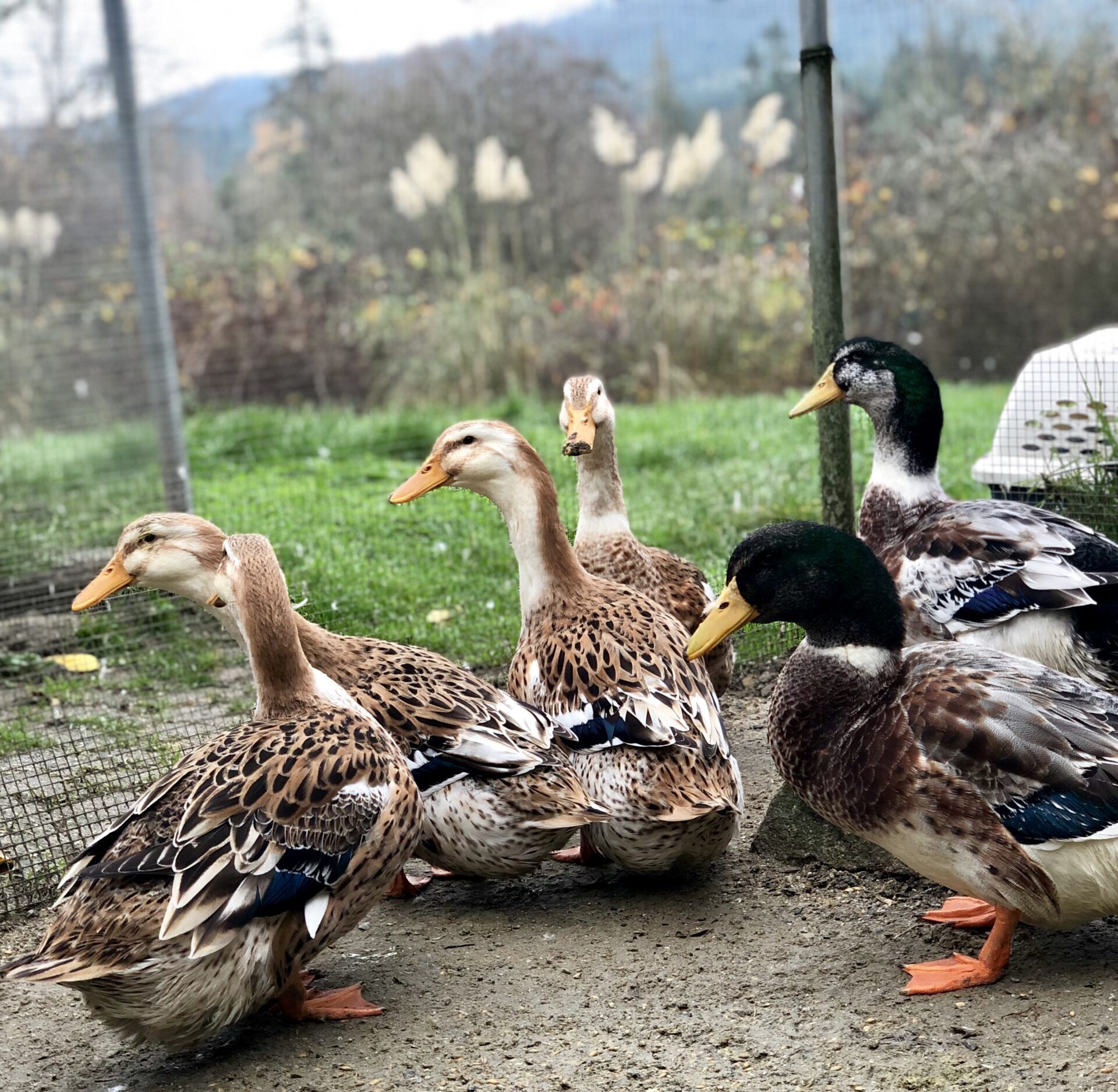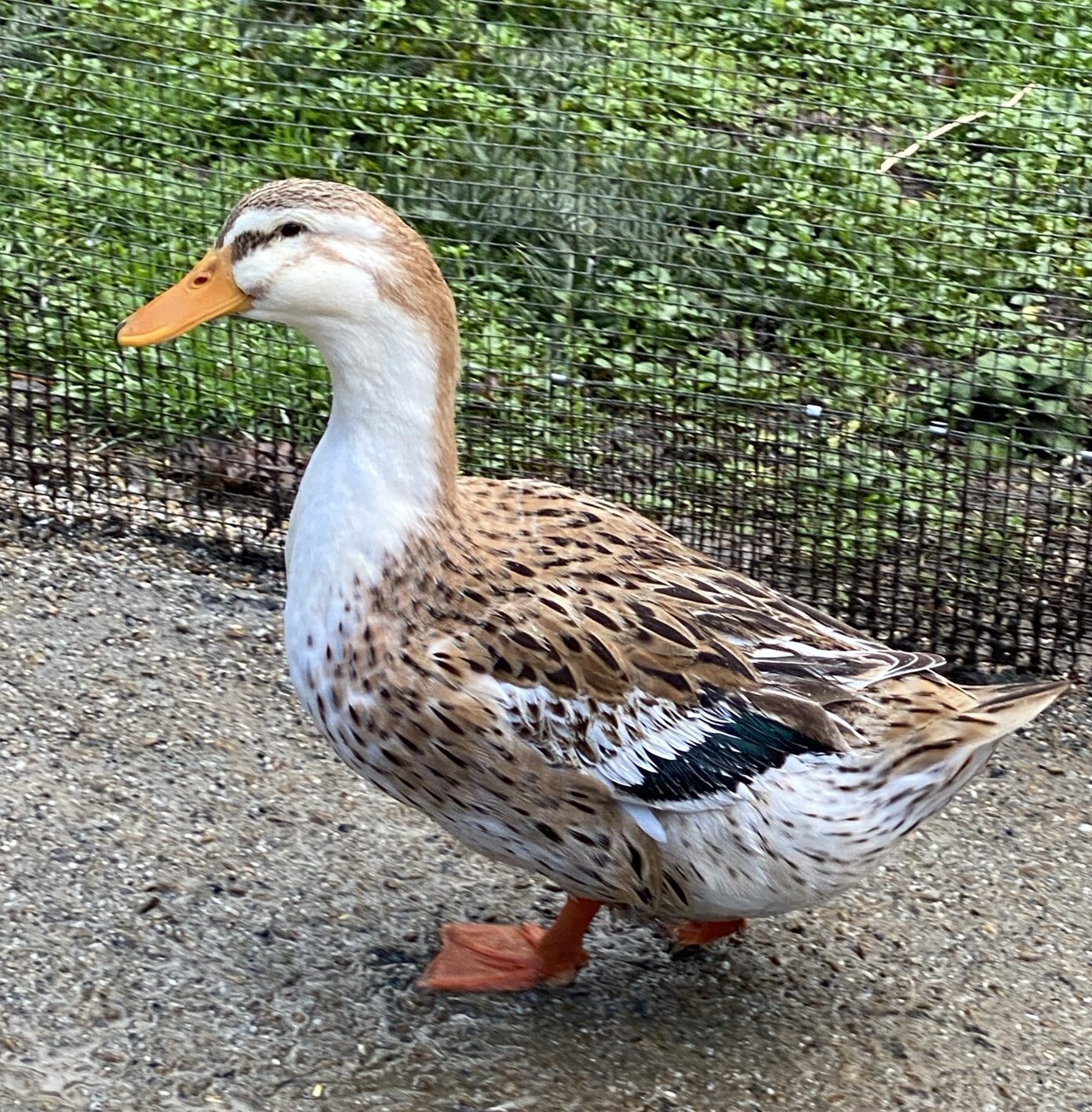The Silver Appleyard Duck
This brief article provides a summary about the Silver Appleyard duck covering topics such as the breed’s history, the confirmation and colour description, typical uses and some fun facts. It is definitely a brief overview about the Silver Appleyard duck but provides some basic information about this great duck breed.
History
Silver Appleyard ducks were developed by Reginald Appleyard in England throughout the 1930’s and appeared in his brochures in the 1940’s. His goal through creating this breed was to make a duck that was attractive to look at yet still maintained marketable traits for egg and meat production. He truly accomplished his goal as the Silver Appleyard is a true triple duty breed being prized for its eggs, meat and decorative plumage!
Silver Appleyard ducks were accepted into the American Poultry Association Standard of Perfection in 1998.

Description
Silver Appleyard ducks are in the heavy class of ducks and range in weights from 7 to 9 pounds. There is only the one colour variety accepted into the standard, though when breeding these ducks sport colours do arise.
If you want the full detailed version of the colouring and confirmation for this breed check out the Heavy Duck class in the APA Standard of Perfection. Their colouring comes from the combination of a pair of light phase genes with a pair of restricted genes, which makes a truly unique colouring pattern. From a quick glance, one might think the Silver Appleyard looks like a combination of the gray and snowy colouring patterns found in call ducks and mallards.
A few of the distinctive colouring features are:
- The males have a silvery-gray throat flecked with fawn
- The females have two fawn stippled with brown facial stripes
- Both sexes wing colour: take a moment with a bird or the Standard and check out how complex and detailed the colouring of the wing should be!
In general, they are a stocky and well-muscled breed of duck that is very well put together. Although they can get up to 9 pounds, a healthy Appleyard will look bold, alert and have no problem getting around. Through my experience with this breed, sometimes individuals (usually drakes) can get a bit too big which becomes evident when they can’t walk easily or struggle to breed. Personally, I think it is important to achieve both the desired weight and confirmation, while maintaining the ability for the bird to do normal activities such as forage and breed.
Uses
Silver Appleyard ducks, as mentioned above, are a truly triple duty bird. They lay a phenomenal amount of large, white eggs for many months of the year; produce large carcasses with high quality meat; and are beautifully coloured ducks. A properly coloured male or female Silver Appleyard duck is a stunning site to see!
These ducks have a fantastic personality and are really a joy to have on the farm! They are full of character, each with their own personalities. When breeding them, they can stay as a group if wanted as the males aren’t too aggressive and can get along throughout the breeding season (at least in my experience). The only consequence of raising such a large duck is the amount of feed that they go through though!
Fun Facts
- Although there is only one variety accepted in the APA, when breeding sport varieties do show up. It is not uncommon to have a pure white or dark phase Appleyard to hatch out from all silver variety breeding stock.
- If you are interested in breeding them, consider installing a somewhat deep pool for them. Having deep enough water that they can actually swim in rather than stand both helps their fertility and day to day enjoyment.
- Appleyard ducklings grow really fast and can be a bit clumsy as they adjust to their growing bodies. They have huge feet as ducklings, and look like little dinosaurs running around!
By Matthew Smith
